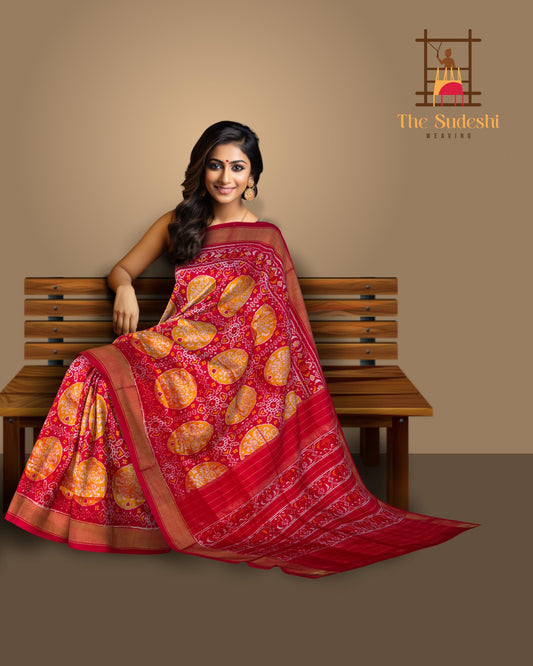Nurturing Heritage: A Guide to Teaching Indian Culture to Our Children
In today’s rapidly changing world, preserving and passing on our rich cultural heritage to the next generation is more crucial than ever. India, a land of diverse traditions, languages, and customs, offers a vibrant cultural tapestry that can shape the values, beliefs, and identities of our children. However, teaching these cultural nuances to young minds requires thoughtful strategies, especially in an era dominated by global influences. This guide provides practical and effective ways to teach Indian culture to our children, ensuring that they grow up with a deep appreciation and understanding of their roots.
1. Incorporate Cultural Practices in Daily Life
One of the most effective ways to teach children about their culture is by integrating cultural practices into their daily routines. This could include simple activities like performing a small puja (prayer) together in the morning, practicing yoga, or even observing fasts on certain religious occasions. Celebrating festivals at home with traditional customs, attire, and foods will not only make these occasions special but will also help children understand the significance behind them.
For instance, during Diwali, involve your children in decorating the house with diyas (lamps) and making rangolis. Explain the story of Lord Rama’s return to Ayodhya and the triumph of good over evil. Similarly, during Holi, discuss the importance of the festival and why we celebrate it with colors. These small, regular practices will naturally imbibe a sense of cultural pride and belonging in children.
2. Storytelling: The Power of Indian Folklore and Mythology
India has a rich tradition of storytelling, with tales from the Ramayana, Mahabharata, Panchatantra, and Jataka stories that have been passed down through generations. Storytelling is a powerful tool to teach children about moral values, bravery, sacrifice, and the consequences of one’s actions—all key aspects of Indian culture.
Set aside time for storytelling sessions where you narrate these tales in an engaging manner. Encourage children to ask questions and relate the stories to their own lives. This not only makes the sessions interactive but also helps them internalize the lessons. Additionally, using storybooks, animated series, or even puppet shows can make these stories more appealing to younger children.
3. Language: A Gateway to Culture
Language is a key carrier of culture. Teaching your children to speak and understand their mother tongue is essential for them to connect deeply with their roots. Whether it’s Hindi, Tamil, Bengali, or any other regional language, make it a point to converse in your native language at home. This not only helps preserve the language but also allows children to access a vast treasure of cultural knowledge, literature, and traditions.
You can also introduce them to classical literature and poetry in their mother tongue. For example, reading the works of Rabindranath Tagore, Premchand, or Subramania Bharati can provide insights into the cultural and social ethos of India. Enrolling them in language classes or encouraging them to participate in cultural programs can further enhance their linguistic skills.
4. Cultural Arts and Crafts: Hands-on Learning
Indian culture is rich in arts and crafts, from Madhubani painting to Kathak dance, from classical music to pottery. Engaging children in these traditional art forms not only develops their creativity but also deepens their understanding of cultural heritage.
Encourage your children to learn a classical dance form like Bharatanatyam or Kathak, or a musical instrument like the tabla or sitar. Participating in workshops or visiting museums and cultural festivals can expose them to the diversity and beauty of Indian art. Moreover, simple activities like making diyas, painting with natural colors, or weaving baskets can be fun, educational, and culturally enriching experiences.
5. Festivals and Rituals: Experiencing Culture Firsthand
Indian festivals are a vibrant expression of our culture and traditions. Each festival, whether it’s Diwali, Eid, Christmas, or Pongal, carries its own unique customs, rituals, and stories. Involving children in these celebrations is a wonderful way to teach them about the significance of each festival.
For example, during Raksha Bandhan, explain the meaning behind the rakhi and the bond between siblings. During Navratri, teach them about the nine forms of Goddess Durga and the importance of fasting and prayer. By participating in these rituals, children learn the values of gratitude, respect, and community, which are integral to Indian culture.
6. Food: A Delicious Cultural Journey
Indian cuisine is an important aspect of our cultural identity. The diverse flavors, ingredients, and cooking methods reflect the country’s history and geography. Introducing children to traditional Indian dishes can be a tasty and engaging way to teach them about their heritage.
Involve your children in the kitchen while preparing traditional meals. Explain the significance of different ingredients and how they relate to health, festivals, and seasons. For example, cooking kheer during festivals or making pickles during the summer can be a fun activity that also imparts cultural knowledge. Encouraging them to try regional specialties from different parts of India will broaden their understanding of the country’s culinary diversity.
7. Travel: Exploring Cultural Roots
Traveling to different parts of India can provide children with firsthand experiences of the country’s rich cultural diversity. Visiting historical sites, temples, museums, and rural areas can give them a deeper understanding of India’s history, architecture, and way of life.
Plan family trips to culturally significant places like Varanasi, Jaipur, or Kerala. Explore ancient temples, attend local festivals, and interact with people from different communities. These experiences will leave lasting impressions on your children and help them appreciate the uniqueness of Indian culture.
8. Values and Ethics: The Heart of Indian Culture
At the core of Indian culture are the values and ethics that have been passed down through generations. Teaching children about honesty, respect for elders, compassion, humility, and the importance of family are all integral to nurturing a culturally rooted individual.
Discuss the importance of these values in everyday life and encourage your children to practice them. Simple actions like touching elders’ feet as a sign of respect, helping others in need, or practicing self-discipline can instill these values deeply. Sharing stories of great leaders and saints, such as Mahatma Gandhi, Swami Vivekananda, or Mother Teresa, can also inspire children to lead a life based on these principles.
9. Books and Media: Curating Cultural Content
In today’s digital age, children are constantly exposed to various forms of media. It’s important to curate content that reflects and reinforces Indian cultural values. Introduce them to books, movies, and documentaries that highlight Indian history, traditions, and achievements.
For example, reading Amar Chitra Katha comics, watching films like Taare Zameen Par or Swades, or viewing documentaries on Indian wildlife and heritage sites can provide valuable cultural insights. Balance their screen time with educational content that enhances their understanding of Indian culture and encourages critical thinking.
10. Lead by Example: The Most Powerful Lesson
Children learn the most by observing their parents and elders. Be a role model by practicing and celebrating your culture with pride. Whether it’s through your daily rituals, the way you speak, or how you interact with others, your actions will leave a lasting impression on your children.
Show respect for your traditions, speak positively about your culture, and engage actively in cultural activities. When children see their parents valuing and living their culture, they are more likely to embrace it themselves.
Conclusion
Teaching our culture to our children is not just about preserving traditions; it’s about giving them a sense of identity and belonging. By incorporating these practices into daily life, storytelling, language, arts, festivals, and values, we can ensure that our children grow up with a deep respect for their heritage. In a world where cultural identities are increasingly being diluted, it’s essential to take deliberate steps to pass on the richness of Indian culture to the next generation, ensuring that they remain connected to their roots while thriving in a globalized world.
- attire
- banarasi silk sarees
- bridal sarees
- bridal silk sarees
- cultural
- cultural diversity
- culture
- diversity
- double ikat
- ethnic wear
- fabrics
- fashion
- global allure
- global runway
- handloom
- handloom love
- handloom sarees
- handmade sarees
- handwoven saree
- heritage
- indian culture
- indian fashion
- kanchipuram silk
- kanchipuram silk sarees
- kanjivaram silk sarees
- luxury silk sarees
- maheswari silk sarees
- muga silk
- muga silk saree
- paithani silk saree
- patola silk
- patola silk sarees
- pure silk
- pure silk sarees
- silk
- silk sarees
- silk sarees collection
- silk sarees online
- silk weaving
- tradition
- vocal for local
- weave
- weavers
- weavers of india
- weaves of india







Leave a comment
Please note, comments need to be approved before they are published.